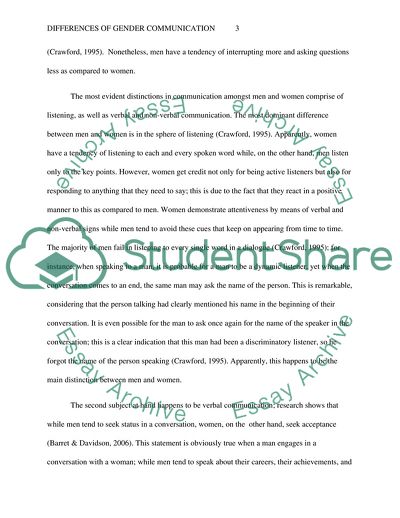Cite this document
(Differences of Gender Communication Report Example | Topics and Well Written Essays - 1250 words, n.d.)
Differences of Gender Communication Report Example | Topics and Well Written Essays - 1250 words. https://studentshare.org/gender-sexual-studies/1780401-differences-of-gender-communication
Differences of Gender Communication Report Example | Topics and Well Written Essays - 1250 words. https://studentshare.org/gender-sexual-studies/1780401-differences-of-gender-communication
(Differences of Gender Communication Report Example | Topics and Well Written Essays - 1250 Words)
Differences of Gender Communication Report Example | Topics and Well Written Essays - 1250 Words. https://studentshare.org/gender-sexual-studies/1780401-differences-of-gender-communication.
Differences of Gender Communication Report Example | Topics and Well Written Essays - 1250 Words. https://studentshare.org/gender-sexual-studies/1780401-differences-of-gender-communication.
“Differences of Gender Communication Report Example | Topics and Well Written Essays - 1250 Words”. https://studentshare.org/gender-sexual-studies/1780401-differences-of-gender-communication.


